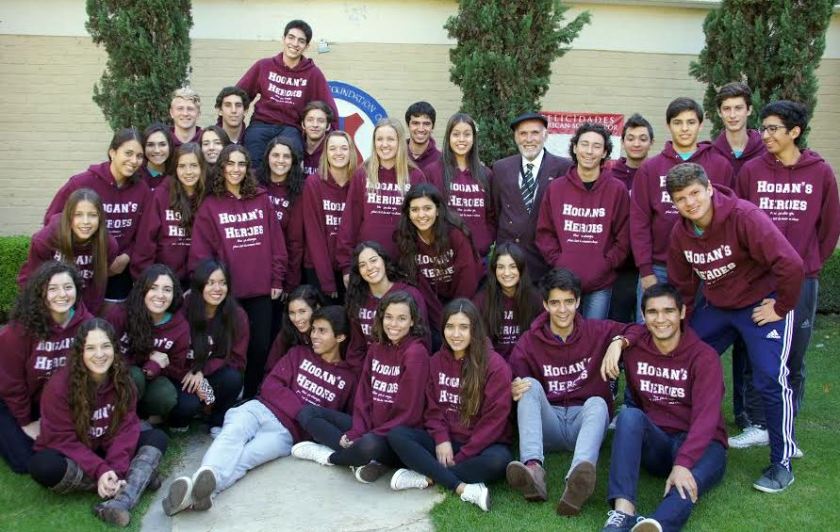

Students at The American School Foundation of Guadalajara with historian and educator Michael Hogan
It’s always interesting to learn what inspired an author to write a book. For historian and educator Michael Hogan, students in a history class he was teaching inspired him to research and write his latest book.
The resulting book, Abraham Lincoln and Mexico: A History of Courage, Intrigue and Unlikely Friendships, is now in the Lincoln presidential library. Washington DC author and book blogger Deborah Kalb featured the book in May 2017, and here are some excerpts from her Q&A interview with Dr. Hogan:
Q: Why did you decide to focus on Abraham Lincoln and Mexico in your new book? A. I was teaching an Advanced Placement U.S. History (APUSH) class at the American School Foundation in Guadalajara, Mexico back in 2013. One weekend, my students went to see Lincoln, the movie directed by Stephen Spielberg.
After they came back to class, I asked them how the movie dealt with Lincoln’s speech in Congress objecting to the Mexican War. I had told the students earlier in class about how it was a very courageous act. They told me that there was nothing at all about it in the movie.
When I expressed my annoyance, one student by the name of Luciana Mendez, said, ‘Well, if anyone is going to tell the story about Lincoln and Mexico, maybe you should be the one to do it.’ So, I took her advice and began my research.”
You can click here to see the entire Q&A by Kalb. By the way, she’s a respected author of several books, including a history of presidential decision-making during the Vietnam War co-authored with her father, veteran journalist Marvin Kalb.
Hogan’s book was published in 2016 by an academic publisher in Guadalajara and the first edition paperback sold out, with a second edition now available in Mexico. A small press publisher in San Diego published a USA Kindle version in 2016, followed by a paperback version distributed worldwide by Ingram. The print versions are available from Barnes & Noble, independent bookstores, and on Amazon. It’s in several university libraries and public libraries, and has received national news media attention including a feature article in the Smithsonian magazine.
An audio book version is also available, and now, the book is available in Spanish in both paperback and Kindle versions.
So, what else did Dr. Hogan’s APUSH class inspire? Well, one thing is a play based on the second half of the book, which examines Lincoln’s role as President in helping Mexico defeat French forces and end European occupation of North America. Titled “Lincoln and Mexico: The Untold Story,” the play has wowed audiences in Guadalajara and nearby Lake Chapala. We covered that in a recent blog post, which you can see by clicking here.
The interest of Dr. Hogan’s students in learning about Lincoln’s legacy of support for Mexico also led to creation of the Lincoln and Mexico Project (LAMP). In January 2017, the Mexican Embassy in Washington DC embraced the international project to facilitate understanding of historical relationships between the two countries. Now, LAMP is working with Mexican consulates to contact educators and civic and business leaders across the USA and arrange presentations.
If you’re interested in becoming part our outreach efforts, just submit a comment to the blog or write an email to lamp@lincolnandmexicoproject.org. As always, we welcome your feedback. Thank you.



